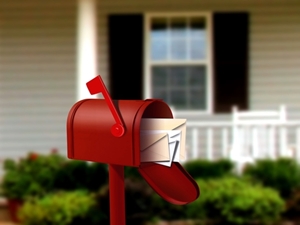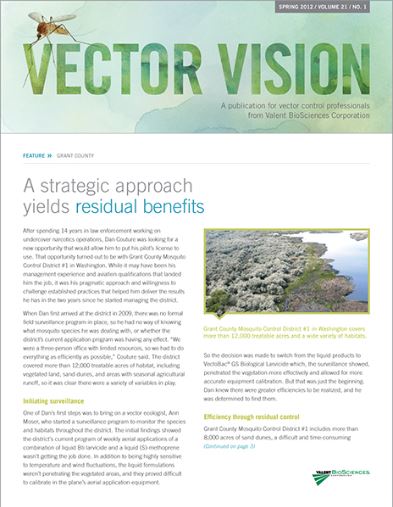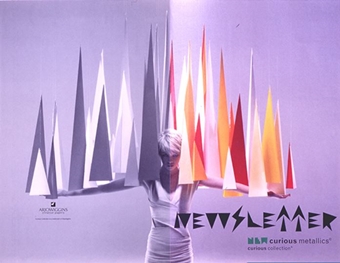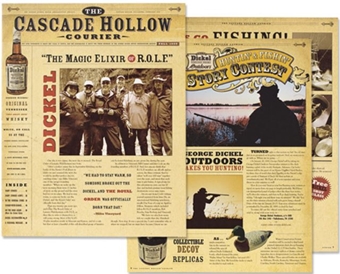 One of the oldest forms of content marketing are printed newsletters that arrive by snail mail, providing valuable, information-rich content that your customers and prospects want. They can be an effective compliment to online promotions or serve niche markets where print is a preferred format.
One of the oldest forms of content marketing are printed newsletters that arrive by snail mail, providing valuable, information-rich content that your customers and prospects want. They can be an effective compliment to online promotions or serve niche markets where print is a preferred format.
Given the overall decrease in postal mail, a print newsletter can stand out to the recipient, unlike an online newsletter that can get lost in an already too full in-box. Conversely, due to the continuing rise of postal costs, newsletters are more likely to be concise and targeted, providing special appeal.
According to the 2014 B2C & B2B Content Marketing Benchmarks, Budgets, and Trends report for North America, B2C marketers use print newsletters with greater frequency at 29% compared to their B2B counterparts at 22%. In addition, customer retention/loyalty is cited as a top marketing goal for B2C compared to lead generation for B2B.
But, both types consider brand awareness to be a crucial content marketing goal, which could explain why print newsletters continue to hold value as a content marketing tactic.
Consumers still love getting mail.
Direct mail, which includes print newsletters, also resonates with consumers in a way that email simply does not. According to marketing firm Epsilon Targeting’s Consumer Channel Preference Study, direct mail continues to deliver as consumers’ preferred means of receiving marketing messages from brands. Here are some of their key findings:
- Six out of 10 U.S. consumers surveyed say they “enjoy getting postal mail from brands about new products.”
- Across all key verticals – from financial and insurance to retail and personal care – direct mail is preferred over email by all respondents.
- The propensity for direct mail also extends to the 18-34 year old demographic
- Consumers report getting an emotional boost from receiving direct mail; 60% agree they “enjoy checking their postal mail boxes.”
- Half of all respondents concur with the statement, “I pay more attention to information I receive by postal mail than if it was received by email.”
As with any print medium, a brand has an opportunity to develop a relationship based on a mutually beneficial value proposition. Print newsletters represent an open invitation to communicate your company story as well as its products and services and to optimize beyond the sales life cycle.
Demonstrate value to cut through the clutter.
As digital marketers, we sometimes forget that good old-fashioned print meets the conditions of content marketing: demonstrate your value proposition while providing value.
Print newsletters, just like print magazines, are a mainstay for many companies wanting a credible way to cut through the clutter. Typically, your newsletter periodical will include articles around one specific subject or topic related to your brand or company and written for a group of people with a common interest — namely your products, services or cause.
Like any marketing communication, it’s important to establish a consistent distribution cycle to be the most effective. Whether it’s weekly, monthly or quarterly, determine a regular schedule and stick to it.
Although the recipients of your newsletter gave you implicit permission to enter your home or office, remember, newsletters are not ads. If you are sending out a promotional newsletter, your goal, of course, is to turn prospects into customers and customers into repeat buyers. You just want to steer clear of any overt sales pitch. But calls to action are more than acceptable.
A print newsletter allows you to give more in-depth information to readers, which is especially important when trying to educate buyers about complex products or services. Once they understand fully the benefits of what your company has to offer, they will be more likely to buy.
Pros of Print Newsletters for Content Marketing:
- It grabs attention.
- It’s a proven way to nurture customers, members and leads.
- There are no costs for distribution because you already own your customer list.
- Print is enjoying resurgence because it feels new when compared to digital marketing.
- The printed word is perceived to be more substantive and therefore more credible.
- Print allows people to unplug from the online chatter. Its noise to signal ratio is zero, compared to the Internet.
- Print is tactile, providing a deeper visceral connection to the brand. (Read Using neuroscience to understand the role of direct mail.)
- For niche demographics, like seniors, print is perceived as more legitimate.
- Print newsletters enjoy a longer shelf life, leading to more active engagement.
Cons of Print Newsletters for Content Marketing:
- Lacks the immediacy and accessibility of other digital communication channels
- Budget and timeline may strain marketing resources
- With people moving with greater frequency, keeping your list clean may be difficult
- Cost prohibitive to publish in more than one language for most companies
Print Newsletter Examples:
George Dickel® – The Cascade Hollow Courier
This Tennessee Whiskey distiller since 1870 celebrates its sipping heritage with apparel, glassware, accessories and tours and publishes a print newsletter to promote it all.
- Quality publication that enhances its overall brand message with consistent design and century-old feel
- Celebrates the outdoor lifestyle so prevalent in the south with content and promotional items, like collectible decoy replicas, to match
- Promoting a Huntin’ and Fishin’ story contest further engages their readers adding to their enjoyment value
Valent Bioscience Corp.
This company was the Gold Winner in the 42nd annual Creativity International Awards for B2B newsletter design, proving that science doesn’t have to be boring.

- Great use of white space, typography, color and visuals
- 4-pages packed with relevant content, including application notes and new product innovation, for its target audience
- Establishes their thought leadership with a strategic article under the heading, Vector Vision, discussing the benefits of controlling the mosquito population, i.e. vector control
Antalis
This leading European distributor of papers and packaging products took home the gold at the 42nd annual Creativity International Awards.

- Bold use of color, design and typography
- Content promotes products relevant to the print and visual communications industries
- Effective use of non-traditional format, fitting for the creative visual arts
- Employs storytelling in a way that makes sense to its target audience looking to learn more about curious metallic®, a specialty paper
Guidelines for Content Marketing with a Print Newsletter:
First impressions: Even though your newsletter is most likely free to subscribers, will a new reader perceive value in it? The layout and openness of the design, color and weight of the paper and the balance of text and graphics are being scrutinized in a nanosecond. Does it say, read me now or shelve for later? All elements of your newsletter design should enhance your overall brand message and meet readers’ expectations.
Format: Newsletters don’t have to be letter size portrait booklets to be called a newsletter. Other formats may work better, depending on your industry. Explore different sizes, orientations and folds based on the purpose and content length of the publication.
Content: Carefully choose your articles so that each one generates results. Avoid using generic filler, such as recipes or quotes. Focus content on industry trends, new product innovations, a top customer spotlight, or company milestones. The goal is to include focused content that meets the informational needs of your target audience. Including testimonials of satisfied customers can add a persuasive element to your content and lets your customers do the selling.
Sales tool: You can attract more readers and more potential customers by featuring your company’s area of expertise. This should be tips or best practices that are useful to readers regardless of whether they do business with you. A utility company might offer “energy efficiency tips” or a hotel conference center could offer a meeting and planning guide for corporate clients.
Offline promotion: Promote free subscriptions to your newsletter. A simple way to generate leads is to include a call to action in all your company’s marketing communications, such as ads, brochures, catalog, trade show signage, etc. that encourages customers to call or email for a subscription.
Online promotion: Include a sign-up box on your website for your free print newsletter and include an archive of sample newsletters to show exactly what the subscriber can expect. Promote it through all your social media channels to drive people back to your website to sign up. You may even want to run a contest using social channels, enticing people to sign up for the printed material.
Maximize exposure: Having gone to the time and expense of publishing a newsletter, you want to cast your net wide. Here are a few additional tactics you can employ:
- Mail your newsletter to all former customers or potential customers who have requested information on your product or service in the past but never ordered from you. Just be sure you make it easy for them to opt out.
- Give your salespeople copies of the newsletter to hand out on sales calls, at trade shows and exhibition booths.
- Send the newsletter to all potential clients who may have a strong interest in a solution-oriented article you published that may appeal to them. For example, if your technology solution helped a local hospital save thousands of dollars on staffing costs, send a copy of the newsletter to all the hospitals in your service area.
When people actually want to receive information about your company, doesn’t it make sense to include a print newsletter in your marketing mix?
If you like in-depth articles like this about content marketing, be sure to visit our index of content marketing tactics.
Photo credit: Shutterstock



